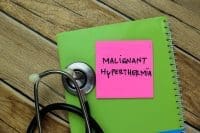Download this article as a PDF
The first minutes, hours, and days are critical after a difficult birth and there are multiple guidelines that govern neonate care:
- The Neonatal Resuscitation Program (NRP), which was developed jointly by the American Academy of Pediatrics and American Heart Association, details responses to delivery room emergencies.1
- After 24 hours or as close to that time as possible, Critical Congenital Heart Disease (CCHD) screenings help determine if infants have serious heart defects.2
- Also, car seat challenge guidelines help you conclude whether infants can safely be transported home in their car seats.3
All these guidelines focus on the need for heart rate and SpO2 monitoring — and pulse oximetry provides both. It offers superior equipment tracking reliably with ECG 99.9 percent of the time.4 Research shows other assessment methods are inferior. For instance, one study showed that observing a newborn’s “pinkness” alone corresponded to an SpO2 of between 10 percent and 100 percent — a wide variation.5 The opportunity for such miscalculations is why the NRP cites pulse oximetry as key in determining interventions.1 Both CCHD screening and car seat challenge guidelines use continual SpO2 monitoring.
There are four key points within the guidelines regarding pulse oximetry’s role in guiding care and interventions in the delivery room and throughout neonatal care. They are:3
- When and how to resuscitate
- Using positive-pressure ventilation
- Performing CCHD screening
- Conducting car seat challenge assessment
Know When and How to Resuscitate
Guidance: The NRP guidelines give you a decision-making protocol that starts in the first few seconds of life. These moments are crucial, since delayed ventilation and oxygenation are associated with adverse outcomes in the delivery room.6
The guidelines begin with the basic considerations normal in any delivery: gestation period, muscle tone, color, normal breathing, and healthy crying. SpO2 monitoring is needed when any of these signs is abnormal or alarming and if stimulation and airway clearing don’t quickly resolve the issues.3
Pulse oximetry readings become necessary at multiple points, including:1
- When positive pressure ventilation occurs for more than a few breaths
- Cyanosis persists more than five to 10 minutes
- Supplemental oxygen is administered
Accuracy is vital for preterm babies, specifically, those whose resuscitation should be initiated only with low oxygen levels (21 percent to 30 percent) and who are carefully monitored to avoid overexposure.1 As a result, NRP guidelines emphasize fast assessments.
Why it matters: Timely, accurate information can help you determine the right intervention to help a newborn transition to normal respiration and avoid unnecessary interventions.
Pulse oximetry insights:
- Visual assessments alone may not be accurate enough to determine resuscitation needs. For instance, an infant who presents with cyanosis may appear visually to improve with stimulation. However, pulse oximetry monitoring at one-minute intervals for several minutes helps determine whether the baby is within the target preductal SpO2 range. Or it can show if supplemental oxygen is needed (see Table 1).1
- Speedy interventions depend, in part, on how quickly pulse oximeters post results. Some pulse oximeters are faster than others, and how they’re attached affects how quickly they post. Connecting the sensor to the cable before applying it to the infant can help produce the fastest initial readings.7
A Nellcor™ pulse oximeter can post an accurate heart rate reading in as quickly as 11 seconds tracking with 99.9 percent accuracy. That’s several seconds faster than a competitor.†
†A Medtronic analysis of studies by Saraswat8 and O’Donnell7 shows that Nellcor™ pulse oximetry posted data several seconds faster than other, similar pulse oximeters.
Table 1: NRP guidelines recommend SpO2 and heart rate monitoring to assess resuscitation needs within the first minute of life.1
Using Positive-Pressure Ventilation
Guidance: If there is respiratory difficulty and low heart rate, delivery room resuscitation might require positive-pressure ventilation (PPV), which presents both benefits and risks.9
Accurate monitoring will show when and how long to administer PPV. For newly born infants, NRP guidelines help determine PPV if a neonate’s heart rate is less than 100 beats/min, or a trial of PPV if the heart rate is more than 100 beats/min should free-flow oxygen or CPAP fail to maintain SpO2.9 According to NRP, a true heart rate reading is crucial. The most important indicator of successful PPV is a rising heart rate.9
Why it matters: PPV is a major intervention requiring post-resuscitation care and observation, and the decision to begin PPV depends on accurate information.
Pulse oximetry insights:
- Infants who receive prolonged PPV are more likely to have morbidities and require special neonatal care.10 Therefore, pulse oximetry must indicate exactly when interventions achieve target SpO2 levels to help avoid adverse effects. Preterm infants are particularly at risk for chronic lung disease (CLD) and retinopathy of prematurity (ROP) resulting from excess oxygen exposure.11
- Heart rate is important for guiding interventions. NRP guidelines caution against a possible tendency for slower or underestimated heart rate readings from pulse oximeters when compared to ECG.1 However, newer generation pulse oximeters are more reliable and may be useful for in measuring both SpO2 and heart rate.7
A Nellcor™ pulse oximeter provided readings that tracked with ECG 99.9 percent of the time. Compare that to a competitor that showed clinically significant errors 23 percent of the time.4
Performing Critical Congenital Heart Defect Screenings
Guidance:
Delayed diagnosis of CCHD can result in infant death or injury.2 Adding pulse oximetry to newborn assessments can enhance the detection of CCHD better than assessments like prenatal ultrasounds which failed to detect a significant number of cases.2 Today, CCHD screenings rely heavily on accurate SpO2 readings with pulse oximetry.
Screenings are performed after 24 hours, or as close as possible to a discharge time less than 24 hours after birth. According to the American Association of Pediatrics (AAP) endorsed screening algorithm, blood oxygen saturation represents the key measurement when screening newborns.12
An infant passes the screen when monitoring shows SpO2 at 95 percent or more in the right hand or foot and has no more than three percent difference between the right hand and foot. If SpO2 is above 90 percent but below 95 percent, or the variance between hand and foot readings is greater than three percent, monitoring is repeated at hourly intervals.12
It can require up to three readings to determine whether a patient passes or fails the screen. Infants whose SpO2 levels don’t meet the criteria by the third reading have failed the screen.12
Why it matters: Inaccurate information may result in a false negative and the missed diagnosis of a potentially deadly heart condition.
Pulse oximetry insights:
- A passed screen relies on less than a three percent variance between hand and foot readings. So, pulse oximeters used in monitoring must demonstrate high levels of sensitivity and specificity.13
- The pulse oximeter should also be designed to overcome challenges such as infant motion to ensure accurate readings. Therefore, guidelines recommend screens be performed with pulse oximeters that: 12
- are motion tolerant
- report functional oxygen saturation
- have been cleared by the FDA for use in newborns
- have an accuracy of +/-two percent
Nellcor™ pulse oximetry with OxiMax™ technology monitoring delivers accurate readings in the standard range of 70 percent to 100 percent SpO2.14 And it offers Nellcor™ LoSat expanded accuracy to 60 percent SpO2.15
Table 216: Accurate and specific pulse oximetry enables reliable CCHD screen results.
Conducting Car Seat Challenge Assessment
Guidance: An AAP-recommended car seat challenge is one of the final guidelines for neonate care before discharge.3
Car seats used to transport infants puts them in a semi-reclined position that could be risky for preterm and low birth weight infants. The car seat challenge helps identify potential cardiac and respiratory problems. As a precaution, these infants should be monitored in the car seat that will be used to transport them after discharge.3
During a car seat challenge, an infant is properly positioned in a car seat and observed for at least 90 to 120 minutes. Throughout that time, the infant is monitored for apnea, bradycardia, and oxygen desaturation. Low oxygen saturation during a car seat challenge may indicate the need for a car bed, supplemental oxygen while traveling, or even continued hospitalization.
Why it matters: The car seat challenge gives a final assessment before discharging a newborn who may carry a heightened risk of respiratory compromise.
Pulse oximetry insights:
- The data a pulse oximeter generates could lead physicians to intervene with supplemental oxygen that can address frequent desaturation, apnea, or other problems.3 Because excess oxygen poses risks, particular to preterm and low birthweight infants, the pulse oximeter used for monitoring must demonstrate a high level of accuracy.11
- Accuracy is also important because the ideal target range for oxygen saturation for extremely low birth weight infants can vary from patient to patient.17 All infants younger than 37 weeks gestation and term infants with various birth defects are at risk for desaturation.3 However, factors including gestational age, chronologic age, underlying disease, and transfusion status will influence whether car seat challenge events are significant.17
Nellcor™ pulse oximetry technology has demonstrated oxygen saturation accuracy of +/- 2 percent at saturations as low as 70 percent. And it showed +/- 3 percent accuracy at 60–80 percent saturations.15
Visit www.Nellcorfacts.com learn more applications for pulse oximetry in monitoring and responding to difficult neonates.
CLICK HERE TO DOWNLOAD A PDF VERSION OF THIS POST
References
1. Wyckoff MH, Aziz K, Escobedo MB, et al. Part 13: neonatal resuscitation: 2015 American Heart Association guidelines update for cardiopulmonary resuscitation and emergency cardiovascular care. circulation. 2015;132(suppl 2):S543–S560.
2. Mahle WT, Martin GR, Beekman RH, et al. Endorsement of Health and Human Services recommendation for pulse oximetry screening for critical congenital heart disease. Pediatrics. 2012;129;190.
3. Bull MJ, Engle WA. Safe transportation of preterm and low birth weight infants at hospital discharge. Pediatrics. 2009;123(5):1424-1429.
4. Batchelder K, Sethi R, Pinto YJ. Pulse rate performance of two pulse oximeters in the NICU. Medtronic White Paper,15-PM-0038. 2015.
5. Dawson JA, Davis PG, O’Donnell DPF, Kamlin CO, Morley CJ. Pulse oximetry for monitoring infants in the delivery room: a review. Arch Dis Child Fetal Neonatal Ed. 2007; 92(1): F4–F7.
6. Rabi Y, Dawson JA, Oxygen therapy and oximetry in the delivery room, Seminars in Fetal & Neonatal Medicine (2013), http://dx.doi.org/10.1016/j.siny.2013.08.007.
7. O’Donnell CP, Kamlin CO, Davis PG, Morley CJ. Obtaining pulse oximetry data in neonates: a randomized crossover study of sensor application techniques. Arch Dis Child Fetal Neonatal Ed. 2005;90(1);F84-F85.
8. Saraswat A, Simionato L, Dawson JA, et al. Determining the best method of Nellcor pulse oximeter sensor application in neonates. Acta Paediatrica. 2012; 101(5):484-7.
9. American Heart Association and American Academy of Pediatrics. Summary AAP/AHA 2015 Guidelines for cardiopulmonary resuscitation and emergency cardiovascular care of the neonate.
10. Akinloye O, O’Connell C, Allen AC, El-Naggar W. Post-resuscitation care for neonates receiving positive pressure ventilation at birth. Pediatrics. 2014;134(4):e1057–e1062.
11. Sundaram V, Louis D, Saini SS, Kumar P. Pulse oximetry sensor application for neonates during resuscitation (protocol). Cochrane Database of Systematic Reviews. 2016. doi.org/10.1002/14651858.CD012297
12. Kemper AR, Mahle WT, Martin GR, et al. Strategies for implementing screening for critical congenital heart disease. Pediatrics. 2011;128(5):e1259–e1267.
13. Van Niekerk AM, Cullis RM, Linley LL, Zühlke L . Feasibility of pulse oximetry pre-discharge screening implementation for detecting critical congenital heart lesions in newborns in a secondary level maternity hospital in the Western Cape, South Africa: The ‘POPSICLe’ study. S Afr Med J . 2016;106(8):817-821.
14. Louie A, Feiner JR, Bickler PE, Rhodes L, Bernstein M, Lucero J. Four Types of Pulse Oximeters Accurately Detect Hypoxia During Low Perfusion and Motion. Anesthesiology 2018; 128(3):520–530.
15. Nellcor Oxygen Saturation Accuracy Specification Grid. Nellcor internal document: Part No. 10091796 Rev B 012013.
16. https://www.cdc.gov/ncbddd/heartdefects/images/screening-chart.jpg. Accessed 8/12/2019.
17. Cummings JJ, Richard Polin RA, Committee on Fetus and Newborn. Oxygen Targeting in Extremely Low Birth Weight Infants. Pediatrics 2016;138(2): e20161576.
© 2019 Medtronic. All rights reserved. Medtronic, Medtronic logo and Further, Together are trademarks of Medtronic. All other brands are trademarks of a Medtronic company. 09/2019-19-PM-0155


















